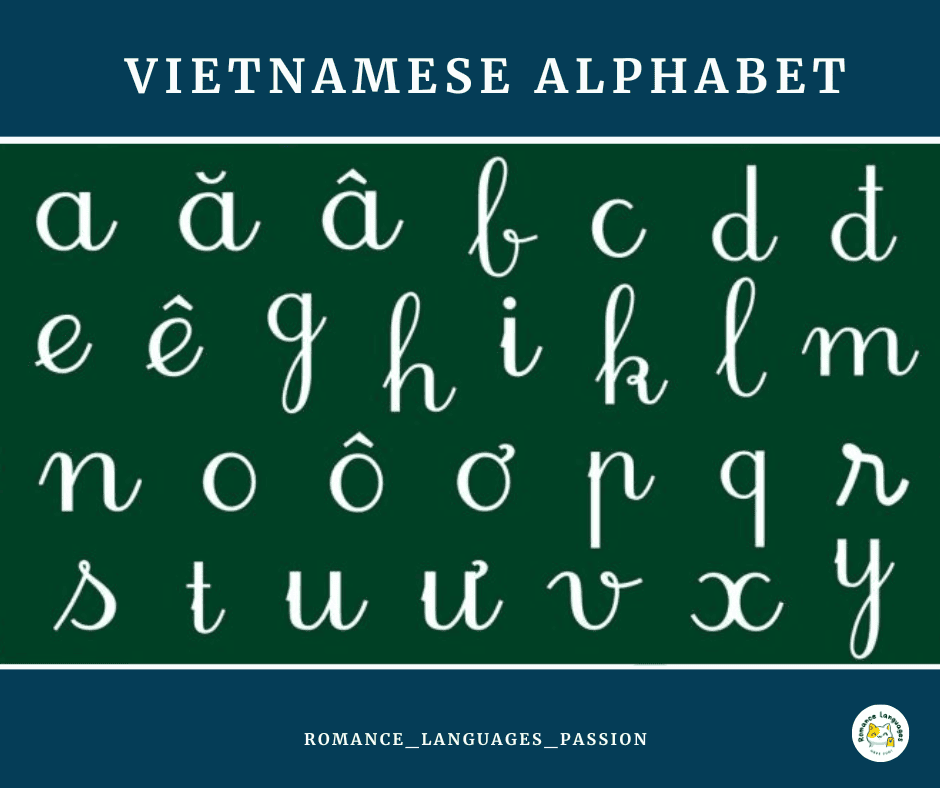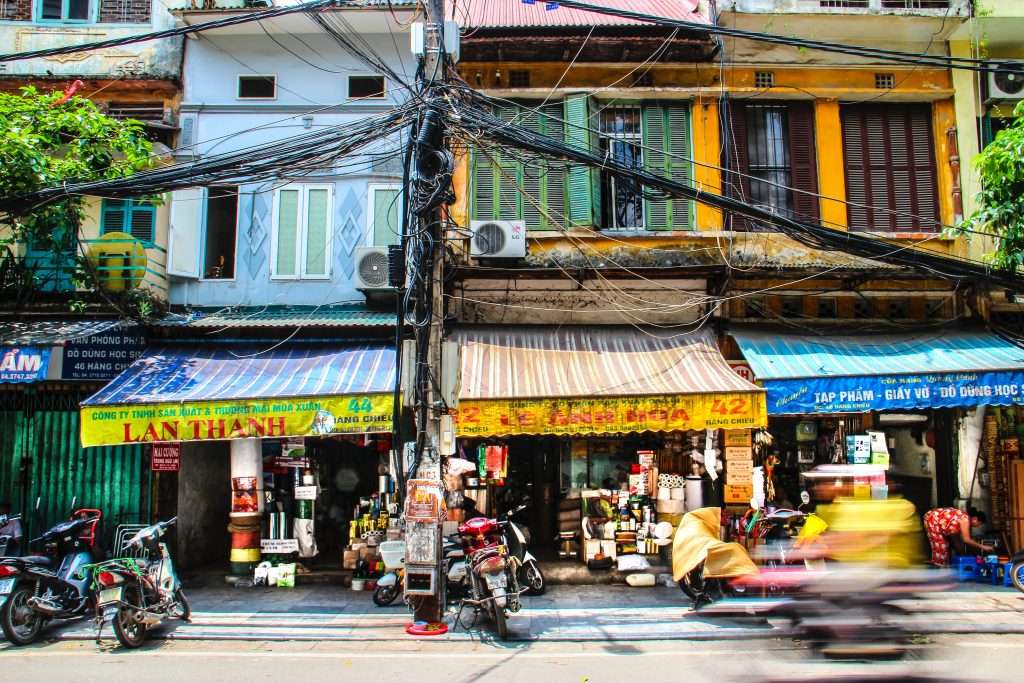Xin chào!👋 Do you know what language it is? As you can see, I usually focus on Romance languages on this blog, but today I’m so excited to talk about something very personal to me: my mother tongue, Vietnamese language. It’s a special language that holds a lot of meaning and history for me, and I can’t wait to share some great information about it with you in this blog post.
Many of my friends have asked me if Vietnamese is an easy language to learn. While it may sound simple at first, I have to admit that even as a native speaker, there are times when I struggle to fully understand and express myself in Vietnamese.
That’s why I wanted to share some Vietnamese grammar points that may be helpful for anyone learning the language. Additionally, I’ll touch on the history of Vietnamese, its alphabet, and the influence of other languages like English, French, and Chinese on its evolution. So let’s dive in and explore the beauty and complexity of Vietnamese together!
Overview of Modern Vietnamese
The modern Vietnamese language is the designated official language of Vietnam and is spoken by the majority of the country’s population, with ethnic minority languages also in use. Additionally, over four million Vietnamese people live outside of Vietnam. Vietnamese is spoken as a second language by 53 ethnic minorities within Vietnam.
According to Ethnologue, which is a widely-used database of world languages, Vietnamese is currently ranked as the 18th most spoken language in the world, with approximately 100 million speakers. Vietnamese is spoken not only in Vietnam, but also by Vietnamese communities around the world, and it has been recognized as a minority language in the Czech Republic.
Vietnamese is a tonal language with six tones and five tone marks, and it contains several dialects. The primary dialects are the Northern dialect, Central dialect, and Southern dialect.
The national writing system in Vietnam is Chữ Quốc Ngữ, which consists of 29 letters derived from the Latin script, including 17 consonants and 12 vowels.
Who Invented the Vietnamese Alphabet?
The modern Vietnamese writing system is primarily based on the Latin alphabet, that is vey good new, right? With some additional diacritical marks to indicate tone and pronunciation.
The Vietnamese writing system has undergone several changes throughout history. Before the 17th century, Vietnamese was written using a system called Chữ Nôm, which used Chinese characters to represent Vietnamese words. However, Chữ Nôm was difficult to learn and read, and only a small percentage of the population was literate.
In the 17th century, a French Catholic missionary named Alexandre de Rhodes introduced a new writing system based on the Latin alphabet. De Rhodes modified the Portuguese alphabet that was used in Vietnam at the time to create a new system that better represented the sounds of the Vietnamese language.
Also interesting : SMS in Portuguese: All the Essential Abbreviations You Need to Know
The modern Vietnamese writing system includes 29 letters, including 22 letters from the standard Latin alphabet (A, B, C, D, E, F, G, H, I, K, L, M, N, O, P, Q, R, S, T, U, V, X) and 7 modified letters with diacritical marks (Ă, Â, Đ, Ê, Ô, Ơ, Ư). These marks indicate tone and pronunciation, and can change the meaning of a word.
For example, the word “ma” can mean “ghost” (with a rising tone) or “mother” (with a falling tone), depending on the tone mark used. Be careful with Vietnamese word, 1 word sometime can have a dozen different meanings.

Is Vietnamese Hard to Learn?
Vietnamese can be considered a challenging language to learn for some learners, particularly those who are not familiar with tonal languages. Vietnamese is a tonal language, which means that the tone or pitch of a word can completely change its meaning.
The difficulty of learning a language can depend on factors such as a learner’s native language, and their motivation and dedication to learning. Some learners may find Vietnamese easier to learn than other languages such as Arabic, Korean, or Mandarin Chinese. In my point of view, it’s quite hard in terms of Pronunciation. Let’s have an overlook on grammar:
Grammar points
1.Vietnamese has no Gender for nouns
One unique aspect of the Vietnamese language is that it does not have grammatical gender, which means that nouns are not assigned masculine or feminine pronouns or articles like in many romance languages.
This can make Vietnamese easier to learn for speakers of languages that do have grammatical gender, as they do not need to memorize the gender of every noun. Forget about trouble with Romance languages!
2. It does not have articles like “the,” “a,” or “an” as found in English and other Romance languages.
Instead, the meaning of a noun in Vietnamese is usually determined by context or other grammatical structures. For example, word order, classifiers, and demonstratives can all help to indicate whether a noun is specific or general, singular or plural, and so on.
For instance, in Vietnamese, the word “cat” can be translated as “con mèo” (literally “a cat”) or simply “mèo” (without the article). The context of the sentence or the use of classifiers or other grammatical markers can help to clarify the meaning.
4. Vietnamese Doesn’t Have Plurals
In European languages, we usually add “s” or “es” to indicate plural, but in Vietnamese, the nouns remain the same whether they refer to one object or multiple objects.
To indicate plurality in Vietnamese, speakers rely on context and other grammatical structures, such as quantifiers or classifiers, to clarify the number of objects being referred to. For example, a speaker might use a word like “những” (which is often translated as “some” or “several”) to indicate that a noun refers to multiple objects.
5.Verb conjugation is easier than ever
In romance languages, we have to conjugate verb and same in English, even English conjugation easier compare to other languages, but still hard sometime in different verb tense
Here’s the good news: Vietnamese is a completely non-inflective language – no word ever changes its form in any context. Learn the word nói, and you know how to say “speak” in all contexts and tenses for all speakers. I nói, you nói, he or she nói, we nói, you all nói, and they nói. That’s dozens, if not hundreds of hours of work saved compared to learning almost any European language.
6. Tenses in Vietnamese learn in 1 minute
Like in English or French. Instead, Vietnamese verbs remain the same regardless of the tense, and tense is indicated through the use of time expressions or context.
For example, to indicate past tense, Vietnamese speakers might use words like “vừa” (just) or “đã” (already) before the verb. For future tense, they might use words like “sẽ” (will) or “chuẩn bị” (about to) before the verb. And “đang” = right now, at this very moment.
Example: With a first-person subject (“Tôi” means “I”):
- Tôi chạy = I run
- Tôi đã chạy = I ran
- Tôi mới chạy=I just run
- Tôi đang chạy = I am running
- Tôi chuẩn bị chạy = I am going to run
- Tôi sẽ chạy = I will run
The Vietnamese in different region
Depending on where you are in the country, you may hear different variations of the Vietnamese language. For example, in the north, people tend to speak slower and use simpler vocabulary, while in the south, the accent is more sing-songy and there are more loan words from Chinese and Cambodian.
However, one of the most distinct accents in Vietnam can be found in the central region, particularly around Huế and Nghệ An. The accent in this area has a unique musical quality to it and can be challenging for Vietnamese from the North speakers to understand (it’s my case, I always struggle to understand my friend from Huế). It’s kind of the same to Spanish speaker to understand Chilean 😂.

Some basic Vietnamese word you should know
- Xin chào! or Chào! = Hello (the word chào has almost the same pronunciation as ciao in Italian or other Romance languages, but I’m not sure that they share the same root)
- Cảm ơn or Cám ơn != Thank you!
- Tạm biệt =Bye
- Rất vui khi được gặp bạn!= Nice to meet you!
- Vui lòng!: Please!
Does Vietnamese have any linguistic connection to Chinese?
Vietnamese and Chinese are both members of the Sino-Tibetan language family, but they are not directly related. Instead, Vietnamese has been heavily influenced by Chinese over the centuries, particularly in terms of vocabulary and writing system.
Chinese characters were used in Vietnam for many centuries, and many Vietnamese words have Chinese origins. However, the two languages have very different grammar and pronunciation systems. Vietnamese is a tonal language, which means that the pitch of a word can change its meaning, while Chinese has a large number of homophones (words that sound the same but have different meanings).
Despite the influence of Chinese on Vietnamese, the two languages are distinct and not mutually intelligible. Vietnamese has its own unique sound system, vocabulary, and grammatical structure.
Are Vietnamese and French related ?
Some people ask me, in Vietnam, people still speak French. The answer is yes, but not much, mainly from older generation, in some specific region. In fact, until today, Vietnam is in group of French speaker with other member of francophone.
Let’s see these examples:
| Vietnamese | French | English |
Banh mỳ | Pain de mie | Bread |
| Bơ | Beurre | Butter |
| Ê-kíp | Équipe | Team |
| Phanh | Frein | Brake |
Vô lăng | Volant | Steering wheel |
| Ri đô | Rideau | Curtain |
| … | … | … |
Other feature that I found very interesting, in French they have “verlan”. Verlan is a form of French slang that involves reversing the syllables of a word. For example, the word “femme” (woman) becomes “meuf” in Verlan. And you know, in Vietnamese, we also have verlan, but instead of verlan for a word, we have verlan for a whole sentence, that’s amazing, right?.
For example, Tiền chưa có ( don’t have money) in verlan we say (Cò chưa tiến) literally mean “The Stork has not advanced yet”. I’m not sure if this is a heritage from the French language, but we love using verlan in daily conversation.

I shared to French kids about Vietnamese culture in 2021
Conclusion
After considering all of the points mentioned above, you may be interested in learning Vietnamese – I know I am, haha! I’m particularly proud of my proficiency in my mother tongue, as it’s the only language in which I’ve reached C2 level 😅.
It’s becoming increasingly common for English words to be used in Vietnamese, with their pronunciation adapted to fit Vietnamese phonology. This is a trend that can be seen in many other languages around the world, where English has had an influence. While some people enjoy incorporating English words into their conversations, others don’t. Personally, I prefer to avoid using English words in Vietnamese if there is already a suitable word in the language.









